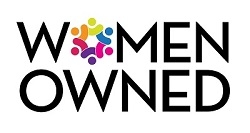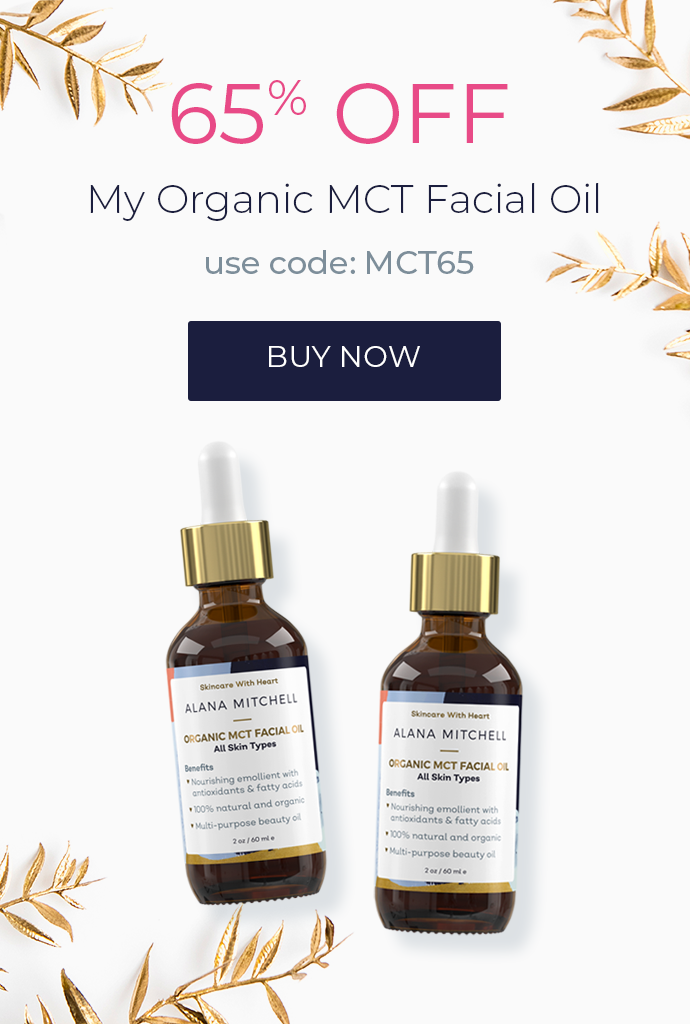What Should You Be Using In Your Skin Care Routine?
Take my quiz and get personalized recommendations from a
licensed esthetician!
Do Grains Belong on Your Face?
When microbeads first came on the scene they were like so much leading-edge technology – innovative and exciting.
But there was a major problem…
Too small to be recycled like other plastics, microplastics eventually accumulated in the environment in large quantities.
Especially in skincare products, where microbeads were meant to be rinsed away, these plastics easily made their way into our surface waters like rivers and lakes where they began to threaten marine life and choke out healthy vegetation.

And because of their tiny size, the microbeads were nearly impossible to remove.
Thankfully, in 2015, the US passed the Microbead-Free Waters Act and many states have banned the plastic additives.
Any products now using them will have to be off the market by July of next year.
Meanwhile, if you’re looking for that same powerhouse exfoliating effect without the harmful cost to the environment and an added bonus of real nutritional benefits for your skin, look no further than one of the most basic food staples in the world…
Grains.
If you’ve ever had an oatmeal bath as a child after a run-in with itchy bugs or a pesky rash, you already know one fantastic contributing factor of grains when it comes to your skin – their soothing ability.
As it turns out, that’s just the beginning.
If you’re looking to amp up your natural skincare routine, read on to find out how adding this traditional, low-tech, plant-based ingredient can be a game changer!

What Are Grains?
The first grain most of us think of is wheat, but as I’m sure you know, there are tons of beautiful amber waves of grain (or quinoa balls of grain) in the grain family.
Chances are, you know what a grain is, and you first learned about it when being taught about the food pyramid.
But, do you really know what it means to be a grain?
Here’s a little refresher.
Essentially, grains are the edible seeds of grassy plants called cereals (not to be confused with the breakfast kind).
They contain three parts: the bran (outer layer), the endosperm (middle, starchy layer), and the germ (inner layer).
If a grain still contains all three parts in their original proportions after it’s harvested, it’s considered a whole grain.
If a grain doesn’t contain all three parts fully, it’s considered a refined grain.
The three most commonly consumed grains are wheat, corn, and rice — which one’s your favorite?
Some of the foods we know as grains are actually the seeds of plants that aren’t technically cereals but are still considered grains, like quinoa and buckwheat.

Benefits of Grains
Besides being naturally soothing to skin – reducing redness, itching, and irritation – grains like oats are loaded with the nutrients and proteins that your skin needs.
They make the perfect natural exfoliant due to their fiber content, but with an added health boost that makes them stand out over many other exfoliants.
What do grains have that some popular exfoliants don’t?
All the “Anti’s”!
As in…
- Anti-aging properties
- Antioxidant protection
- Anti-inflammatory benefits
As exfoliants, grains aren’t just subtracting - they’re adding, too.
While corn and barley and other grains are stripping your skin of dead cells and other debris, they’re also providing protection and shoring up the skin’s barrier function at the surface while boosting your skin’s natural ability to repair itself under the surface.
Think nourishing, like a good hot meal after a long cold day, but for your skin!
How do they do all that?
Vital Minerals – Minerals don’t get a lot of attention in skincare, but they’re essential at the cellular level.
Some minerals help transfer nutrients across the cell membrane, while others promote the synthesis of critical elements like collagen.
Skin cells can’t function properly without the minerals like calcium, magnesium, and potassium found in grains.
Amino Acids – These little compounds are the building blocks of proteins.
Amino acids are essential to the body, including your skin; they help maintain hydration and keep your skin supple.
Ferulic Acid – Grains like corn, wheat, and oats have the highest ferulic acid content.
This component of grains helps defend the skin from environmental stressors and also boosts and stabilizes the effects of antioxidants applied to the skin, such as vitamins C and E.
Antioxidants – Grains are loaded with antioxidant vitamins like vitamin E. Why is this important?
Because these vitamins protect against damage from sun exposure and other environmental exposures and toxins by fighting free radicals.
A simple way to think of it: free radicals tear down your skin, while antioxidants build it back up.
Of course, like any other ingredient, grains may not be right for everyone.

What About Gluten Sensitivities and Allergies?
Whenever you introduce a new ingredient, if allergies are a concern for you, be sure to use 24-hour patch testing first.
Normally, if you have a dietary gluten intolerance, you won’t have to worry about applying grains containing gluten to your skin. Phew!
According to doctors at the Mayo Clinic, patients who have a gluten allergy or celiac disease, even the skin version of celiac disease called dermatitis herpetiformis (DH), only need to avoid ingesting gluten or applying gluten-containing products to the lips and mouth area.
Apparently, the allergy-causing substances in gluten won’t normally be absorbed into the system through the skin, and it’s in the digestive system that the problems are caused.
Having said that, please know that I’m not a nutritionist, and can only pass on the information I have available.
I know how frightening allergies can be, so above all, be safe!
Of course, for most people, grains pose zero risks.
The Best Grains for Your Skin and How to Spot Them
If you’re looking to pamper and nourish your skin through the cold months while also keeping your complexion bright by removing dullness-causing debris, here are some of my favorites along with the Latin/science name you’ll sometimes see on labels.
Another option would be to create your own grain-based DIY formula.
I'll include recommendations for that below!
Warning: Don’t over exfoliate, especially in winter. Too much exfoliation action, more than once or twice a week, will eventually disrupt the skin’s natural oil production and can disrupt the acid mantle.

Wheat (triticum vulgare)
Wheat is often found in brightening products and serums for its ability to prevent discoloration and dark spots.
Due to its high vitamin and mineral content, wheat provides both anti-inflammatory and antioxidant benefits.
This means it will soothe skin but also protect against free radical damage, promote healthy cellular function, and encourage elasticity.
Along with oats, wheat is probably one of the most commonly found grains in skin care products.
The ASDM Beverly Hills Moisturizing Facial Toner is formulated with wheat protein to moisturize, soothe, and condition skin.
The naturally-derived hydrolyzed wheat protein contains wheat oligosaccharides (carbohydrates) and offers a combination of moisture-balancing and film-forming properties that work synergistically to give skin a smoother, softer feel.
Simplest DIY recipe: Make a paste of wheat flour and water and use as a simple exfoliating and brightening daily cleanser.
Barley (hordeum vulgare)
Barley is known for being an all-natural treatment for rosacea and acne due to its ability to remove dead skin cells and reduce inflammation and irritation.
Barley also encourages elasticity and cell turnover, fights free radicals, and protects against environmental damage by exfoliating gently while delivering key vitamins and minerals.
Barley extract has a high concentration of phenols which most notably provide antioxidant protection against free radical damage due to exposure.
It’s both soothing and strengthening to your skin.
You’ll find barley and barley extract most often in cleansers and serums.
Best DIY recipe: Simply make a paste of lemon juice and barley flour for a refreshing and protective at-home mask.

Corn (zea mays)
Corn, like the other grains, is packed with antioxidants vitamin B, C, and E.
It’s great for blemish-prone skin due to its soothing anti-inflammatory properties, which make cornmeal a common at-home treatment for eczema.
Cornmeal can be ground very finely for an extra-gentle exfoliant.
Corn oil is often used in skin care products and is rich in vitamins and minerals while also boosting hydration and health at the cellular level.
Best DIY recipe: Squeeze the juice of one large orange or one small grapefruit and combine with ¼ cup of cornmeal to make a natural facial scrub. This makes a great antibacterial cleanser and natural source of vitamin C.
Oats (avena sateva, beta glucan)
Nutritious oatmeal is great for various skin types and has the dual capacity to absorb excess oil and nourish and moisturize dry skin.
Another gentle exfoliant, oats are commonly used in natural acne treatments for their anti-inflammatory properties and ability to gently remove dirt and oil that clog pores.
You’ll find oat extract in everything from masks to moisturizers and serums.
Like the other grains, the properties of oats promote healing, cellular regeneration, and collagen production.
Oats contain saponins, which are natural cleansers.
The Epicuren Extra Fine Citrus Facial Scrub soothes skin with oatmeal, tangerine peel oil, and orange oil.
Natural emollients like finely ground walnut shell granules and apricot kernels gently scrub away dirt, debris, and dead skin cells that can clog pores and cause blemishes.
The formula is vegan and cruelty-free!
Best DIY recipe: Make a gentle superfood facial cleanser by combining ½ cup almond milk, 1 tsp honey, 1 tsp lemon juice, and 1 tbsp oats.
Quinoa (chinopodium quinoa)
It’s not just a superfood, it’s a superfood for the skin – quinoa is loaded with minerals to promote healthy cell function.
It’s native to Andean countries such as Peru and Bolivia where it’s been used on skin for centuries.
You’ll sometimes find quinoa in eye cream and firming lotions as it helps to strengthen, plump, and hydrate areas of dry or thin skin.
It’s a great protector against pollution and other environmental stressors and commonly used in skin brighteners, cleansers, and toners.
Aqlla Spa, based in Peru, has a special treatment all about quinoa.
Their Deep Hydration Facial Cleanser is a three-step facial using quinoa-based products that aim to work against premature aging, sensitive, and/or dehydrated skin.
Try this DIY recipe: Mix quinoa with olive oil or argan oil to a gel consistency to make an all-natural oil cleanser with exfoliant properties.
Rye (secale cereale)
Rye has a high concentration of both ferulic acid and Vitamin E, along with the usual anti-oxidants, which lend to its protective and restorative properties.
This makes it great for smoothing out fine lines and wrinkles, so you’ll often find the ingredient in anti-aging serums and moisturizers.
Rye flour makes an excellent natural cleanser, and the minerals found in rye promote the healthy functioning of skin cells while strengthening the skin.
Like the other grains, rye makes the perfect exfoliator for stressed skin that’s constantly suffering from exposure to pollution or harmful toxins.
Rye seed extract makes a popular and nourishing ingredient in night creams, eye therapies, and other recovery creams.
It’s generally thought to lead to a smoother skin surface.
Basic DIY recipe: Mix rye flour with honey and warm water to form a paste consistency and apply as a soothing nutrient-packed face mask.

Final Thoughts
A great source of minerals like magnesium, zinc, calcium, and iron, grains make the perfect superfood for your skin, beauties!
They’re packed with antioxidants, which fight free radical damage.
They help skin recover from exposure to the elements as well as pollutants, and they exfoliate both naturally and gently.
You won’t find another natural ingredient that provides this much nourishment while at the same time stripping away oil and debris and preparing your skin to absorb healing ingredients like vitamins C and E.
As cold weather approaches, this is the perfect time to add soothing, comforting, and protective grains to your skincare routine.
Microbeads were not a healthy solution, it turns out, and sometimes getting back to the basics is the best solution for all of us.
Sustainable grains have been providing nourishment for our bodies for ages, and now not only are they used to nourish and protect our skin, but they’re helping to protect our oceans and waterways, too.
Try out one of my favorite DIY recipes above and let me know in the comments how you like it. Or suggest a favorite of your own!
Top Brands
New Brands

Recent Posts

Are You Taking the Right Steps to Care for Your Skin?
Take the Quiz
Skincare Secrets!
10-step guide for healthy, beautiful skin after kids.
100% privacy. I will never spam you!















